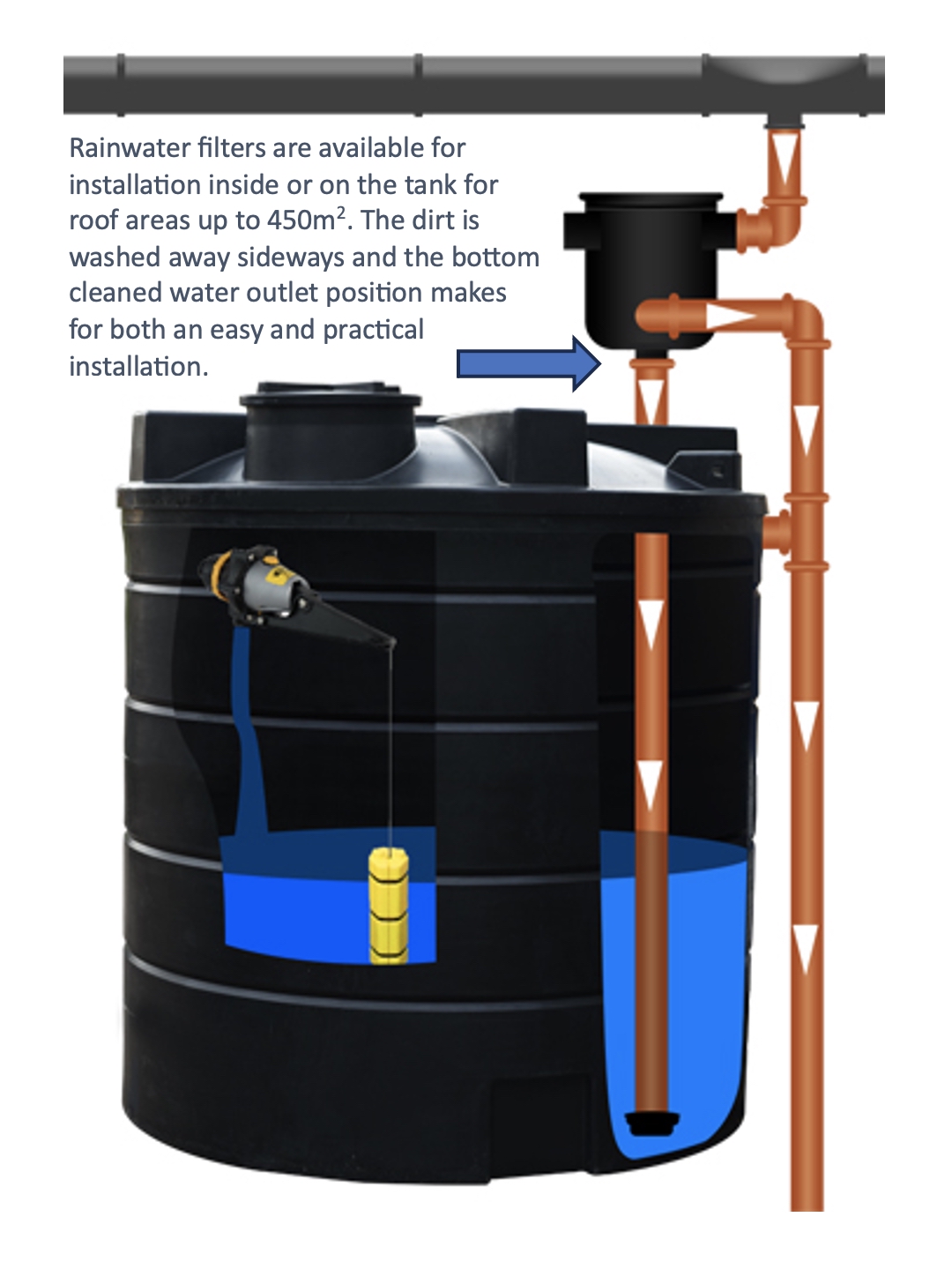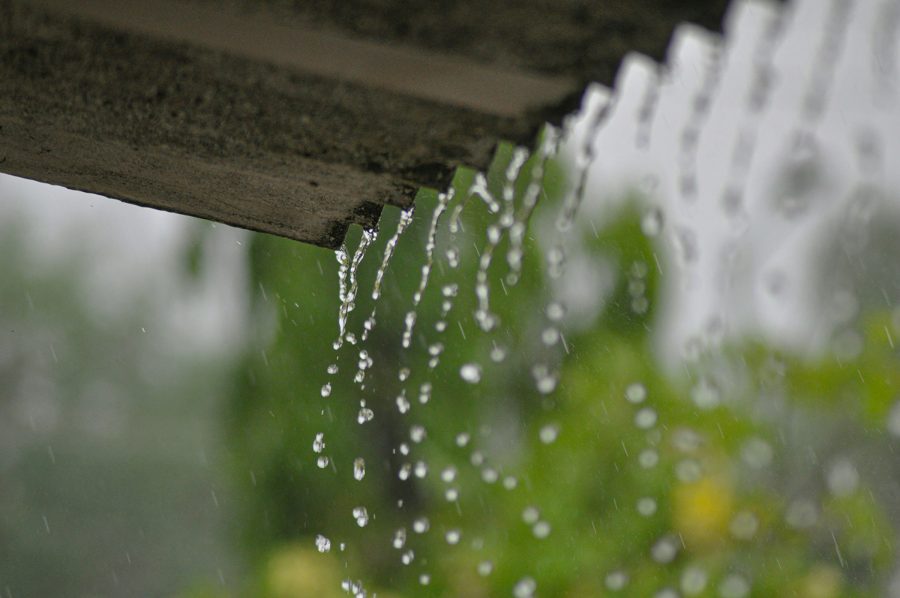James Blaxland, Managing Director at Shrewd Industrial Ltd, looks at some rainwater harvesting options for a free resource.
Having recently assisted a farmer in Dorset and provided him with several large rainwater tanks which he plans to link together and use the rainwater for spraying his crops, it got me thinking. The benefits of rainwater harvesting isn’t just a wonderful solution for large scale farmers and commercial business premises alike, but for every eco-conscious and self-sufficient human being on the planet.
Rainwater is a free, natural resource, falling from the sky, often in abundance, yet the majority of it runs straight off rooftops, down drains and into waterways. For smallholders this is a missed opportunity.The rainy season brings both hope and heartbreak. While crops thirst for consistent water, much of our precious rainfall runs off roofs and land, wasted. Meanwhile, farmers battle dry spells with limited irrigation, watching yields dwindle. But there is a simple solution that holds the power to transform small-scale farming: rainwater harvesting tanks.
RAINWATER HARVESTING IS NOT A NEW IDEA
Our ancestors relied on it long before piped water and boreholes. Today, it remains one of the most cost-effective, environmentally friendly, and empowering ways to secure water for farming and household use, yet it is staggering how little we hear about it.
Smallholders have a unique opportunity to lead the way in responsible water use. Perhaps one of the most compelling aspects of rainwater harvesting is the opportunity for smallholders to share rainwater harvesting knowledge via networks. Whether through group purchases of storage tanks, shared methods and strategies, or community-led conservation efforts, smallholders can certainly inspire change on a larger scale and continue to further enhance sustainability.
By capturing and storing rain, you simply turn what’s often seen as a nuisance into one of your most valuable assets: a steady, sustainable supply of clean water that supports your land, animals, and crops all year round.
HUGE SAVINGS FOR THOSE ON A WATER METER
Smallholders can reap the rewards of rainwater harvesting and gain reliable access to water during dry periods, reducing their dependence on expensive mains water supplies and in turn, lowering water bills. If you are on a water meter, you’ll see the savings immediately and especially if you water large gardens or keep livestock.
Droughts, hosepipe bans, and rural supply issues can all impact access to mains water. As I write this article, reports are emerging that England has suffered its driest start to spring since 1956 and therefore is at risk of drought conditions this summer. Reservoir levels are falling and farmers are struggling to grow crops due to the sunniest April on record following a March which yielded less than half the average rainfall for the month.
While there are currently no hosepipe bans planned as of yet, this is a possible course of action the Environment Agency could take. After a recent meeting of the government’s National Drought Group which includes the Met Office, government regulators, water companies, farmers and conservation experts – the environmental regulator urged firms to do more to safeguard supplies. Needless to say, we the public can play our part too and become self-sufficient by harvesting rainwater to strengthen resilience against climate change whilst ensuring supplies are there when we need it most. Alleviating our reliance on the weather or water companies perfectly aligns with an eco-friendly, sustainable, low impact lifestyle.
FREE FROM CHLORINE OR ADDITIVES
Aside from this, further key benefits of rainwater is that this free resource is naturally soft and free from chlorine or. additives. Plants love it, vegetables love it and it is therefore ideal for polytunnels and greenhouses too, as well as watering livestock and cleaning tools or vehicles. Installing a rainwater harvesting tank doesn’t require vast land or huge expense either. Tanks connected to rooftops or tarpaulin catchments can collect thousands of litres of valuable, clean water. Capturing nature’s generous free natural resource alone will end up paying for the tank by way of reducing reliance on mains supplies. Whether you’re starting small or planning a full off-grid setup, rainwater harvesting is one of the easiest, most cost-effective improvements you can make on your smallholding.
BEFORE YOU BUY, MAKE A COUPLE OF CALCULATIONS
Before you purchase a tank it is helpful to roughly calculate two things. How much water you use and how much rainwater you can collect. As a general rule of thumb, 1mm of rain on 1m² of roof = 1 litre of water. As an example, say you have a shed roof that’s 10m² and you get 100mm of rain in a month (this is fairly typical in the majority of the UK), that is 1,000 litres of rainwater captured in a month. However, it is also about timing. 1,000 litres could also be captured on a single rainy day alone. If you are supporting livestock, you will be very grateful for this downpour during the next dry spell. Larger roofs (barns, greenhouses, polytunnels) obviously collect even more.
 I would suggest the correct size tank for your operation should allow at least 50% more than your required / periodic usage to ensure you have sufficient reserves, especially during dry spells. One of the most common options are high quality MDPE (Polyethylene) tanks which are both impact and weather resistant and the best choice for smallholder set ups as they are extremely durable, easy to transport and set up.
I would suggest the correct size tank for your operation should allow at least 50% more than your required / periodic usage to ensure you have sufficient reserves, especially during dry spells. One of the most common options are high quality MDPE (Polyethylene) tanks which are both impact and weather resistant and the best choice for smallholder set ups as they are extremely durable, easy to transport and set up.
These tanks are manufactured in the UK and we provide these in a wide range of capacities. They come complete with a 10 year manufacturer warranty against any manufacturing defects for peace of mind. We also supply rainwater harvesting filters which are suitable for roof areas up to 450m2.
Our overheads at Shrewd Industrial are purposely low, which ensures we can remain extremely competitive indeed – in turn helping you, the smallholder, reduce the length of time before seeing a return on your rainwater harvesting investment.
Let’s not let another rainy season pass by in waste! Let every drop count and invest in a rainwater harvesting tank to harvest not just water, but a better future.
For further information please call me on 01743 612028.
More content like this can be found in The Country Smallholder magazine. Subscribe here.
For FREE updates from the world of smallholding, sign up for The Country Smallholder newsletter here.








